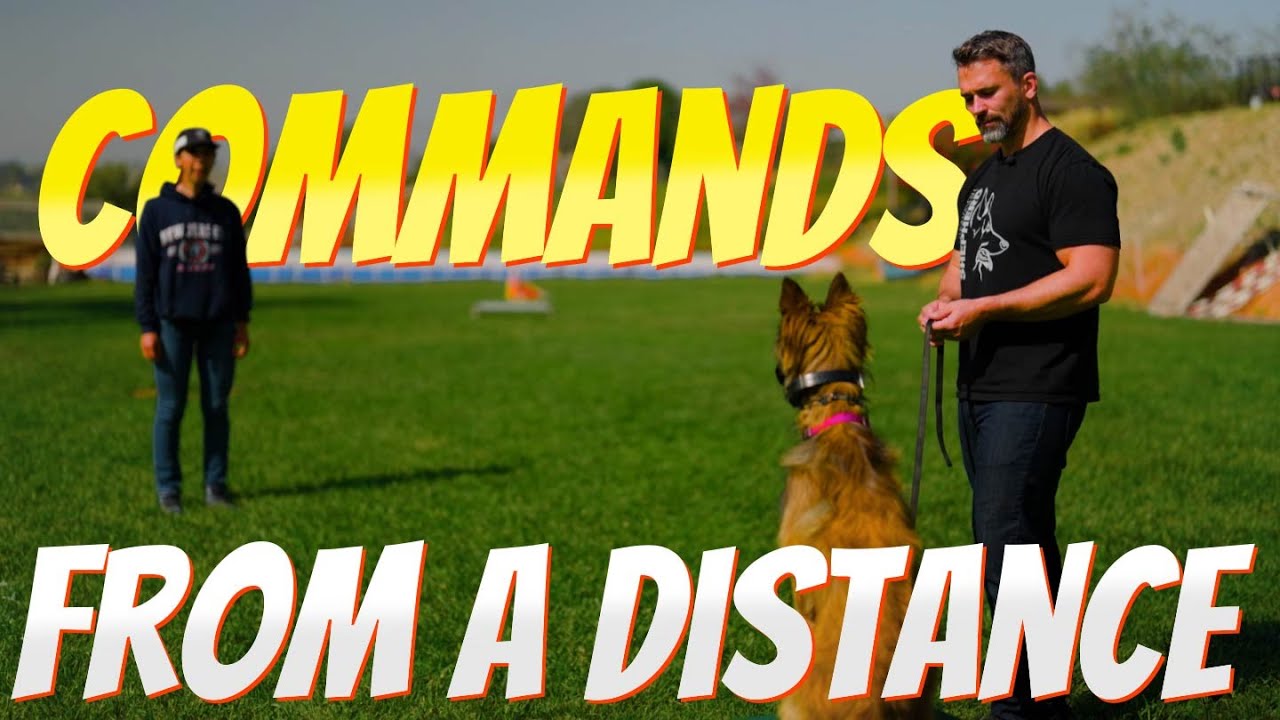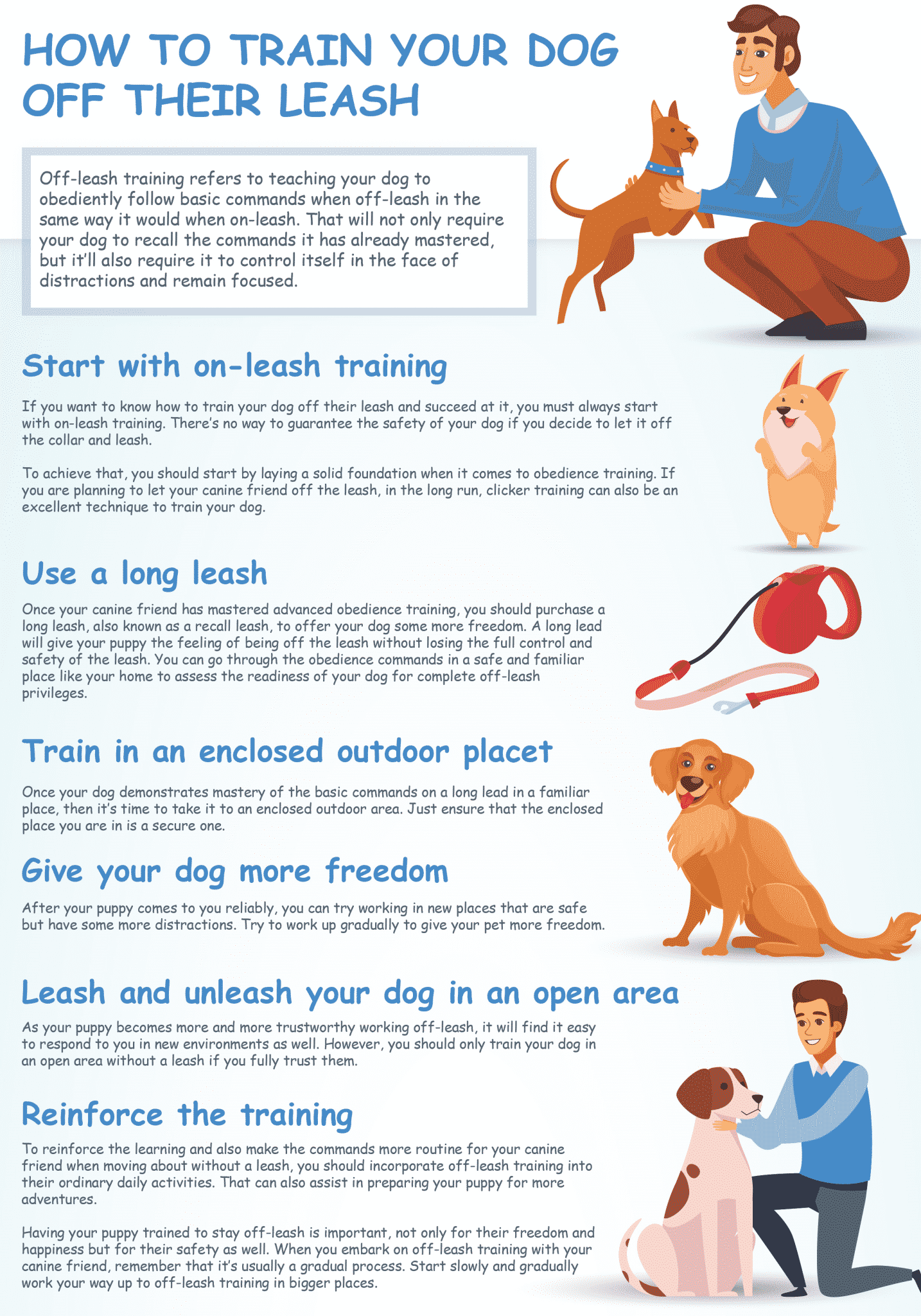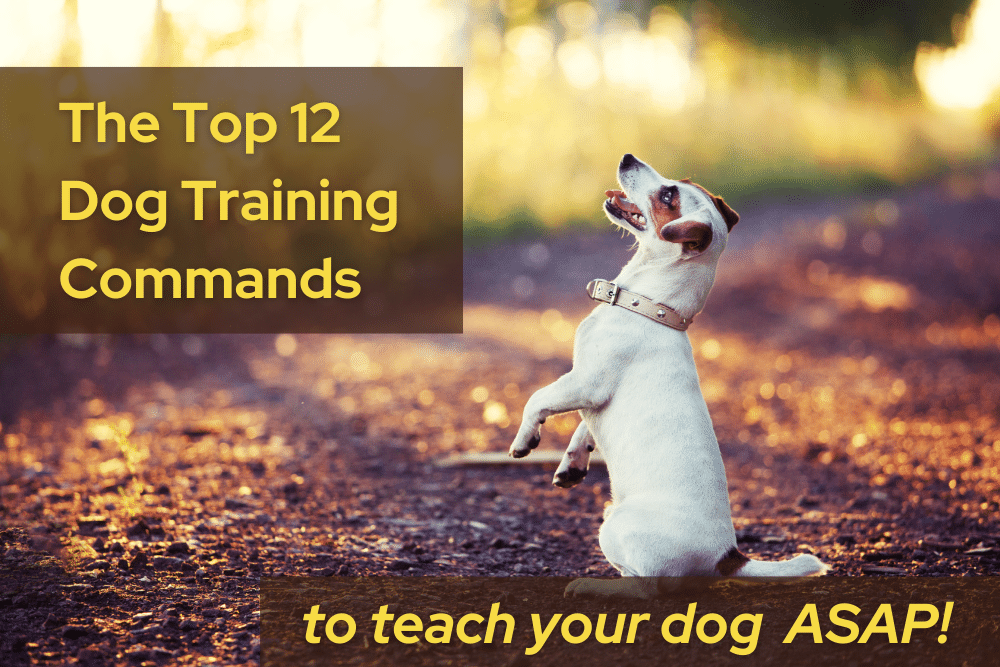Training your dog to follow attack commands is a serious responsibility that requires dedication and knowledge. It’s not just about obedience; it's also about building trust and ensuring safety for both you and your furry friend. In this blog post, we’ll delve into effective techniques for training your dog to respond to attack commands, while keeping safety as a top priority. Whether you have a guard dog or simply want your pet to respond well in tense situations, this guide is here to help you understand the essentials.
Understanding the Importance of Safety in Dog Training

When it comes to training your dog, especially for something as serious as attack commands, safety is paramount. Here are a few reasons why ensuring safety in dog training is critical:
- Protecting Yourself: Proper training reduces the risk of your dog mistakenly interpreting commands or reacting aggressively towards you or others.
- Protecting Others: A well-trained dog can differentiate between a true threat and a false alarm, thereby preventing unnecessary harm to bystanders.
- Building Trust: Training should foster a deep bond between you and your dog, enhancing communication and trust, which are crucial for safety.
Here are some key safety considerations to keep in mind during training:
- Know Your Dog: Each dog is unique, and understanding their temperament and behavior is essential. Some dogs may be more anxious or aggressive than others, which can affect their training.
- Use Positive Reinforcement: Incorporate treats, praise, and play to reward desired behavior. This not only motivates your dog but also ensures training remains a positive experience.
- Controlled Environment: Start training in a safe space with minimal distractions. Parks or busy streets can overwhelm your dog and lead to mistakes.
- Professional Guidance: If you’re unsure about the training processes, consider enlisting a professional trainer who specializes in attack command training.
- Consistent Commands: Use clear and consistent commands. Confusion can lead to miscommunication, which endangers both you and your dog.
Additionally, you should set realistic goals. Training for attack commands should never be rushed; it’s a gradual process that requires consistent effort. Frequent practice ensures that your dog understands the commands and can respond appropriately.
Lastly, always remember to assess your dog regularly. If they show signs of stress or hesitation during training, take a step back. A positive and calm approach should always be your priority. By focusing on safety, you’re setting the stage for successful and effective attack command training. Your dog will appreciate it, and so will you!
Also Read This: Does Dailymotion Support OGG Video Files for Uploading and Viewing
3. Choosing the Right Training Environment

When it comes to dog training, the environment plays a crucial role in ensuring effective learning. A well-chosen space can minimize distractions and create a positive atmosphere for both you and your dog. Here are some tips for selecting the ideal training environment:
- Quiet Spaces: Look for areas that are free from loud noises and chaotic activity. This could be inside your home, in a quiet park, or a training facility specifically designed for dog training.
- Controlled Settings: If you're just beginning, consider a fenced yard or a spacious indoor area where your dog can move freely without the risk of running off or getting into trouble.
- Gradual Exposure: Once your dog masters commands in a controlled environment, gradually introduce new settings with mild distractions, such as people walking by or other dogs at a distance.
- Safety First: Ensure the training space is safe for your dog. Remove any potential hazards, such as toxic plants or small objects that a curious pup might chew on or swallow.
Remember, the goal is to create a focused and stress-free environment that fosters effective learning. You can adjust the complexity of the training environment as your dog becomes more proficient.
Also Read This: How to View Captions and Subtitles on Dailymotion Videos
4. Basic Commands Every Dog Should Learn First

Before diving into advanced attack commands, it's important to establish a solid foundation with basic commands. These commands not only enhance communication between you and your dog but also ensure their overall safety. Here are some essential commands every dog should master:
| Command | Description |
|---|---|
| Sit | This is often the first command dogs learn. Teaching your dog to sit helps them focus on you and calms them down during training. |
| Stay | Once your dog is sitting, teaching them to stay can prevent them from wandering off during training sessions or in public. |
| Come | This command is essential for your dog’s safety. It ensures they return to you when called, helping to prevent dangerous situations. |
| Heel | Getting your dog to walk beside you on a leash without pulling is vital for enjoyable walks and good behavior. |
| Leave It | This command teaches your dog to ignore distractions—this is especially important for preventing unwanted behaviors towards other animals or objects. |
Each of these commands lays the groundwork for more advanced training. Start by practicing these commands in a distraction-free environment, and once your dog has mastered them, you can gradually introduce distractions to reinforce their learning.
Training takes time and patience, but with consistency and positive reinforcement, your dog will be well on their way to mastering both basic and advanced commands!
Also Read This: Is There a Sound Problem with Dailymotion? Troubleshooting Audio Issues on the Platform
5. Introducing Attack Commands: What You Need to Know

When it comes to training your dog to follow attack commands, it's crucial to approach the process with both safety and mindfulness. Attack commands are serious and should only be used in specific circumstances, such as personal protection or competitive sports. Here are some essential points to consider:
- Understand Your Dog's Temperament: Not every dog is suited for attack training. Breeds with strong protective instincts, such as German Shepherds or Rottweilers, may naturally be more inclined to follow these commands. However, regardless of breed, your dog should be well-socialized and comfortable in various environments.
- Establish Trust: Before introducing attack commands, ensure that your dog trusts you completely. Positive reinforcement, including treats and praise, will help strengthen this bond.
- Consult Professionals: If you’re inexperienced in training dogs for attack commands, consider consulting a professional trainer who specializes in protection training. They can guide you in techniques that are both safe and effective.
- Focus on Obedience Training First: Your dog should have a solid foundation of basic obedience commands like “sit,” “stay,” and “come.” Without this groundwork, introducing attack commands may lead to confusion and misbehavior.
- Know the Laws: Different states and regions have varying laws regarding dog training for protection. Familiarize yourself with local regulations before proceeding with attack command training.
Training your dog to follow attack commands can be a rewarding process, but it comes with significant responsibility. Ensure you’re prepared for the commitment and take all necessary precautions to train your dog safely and effectively.
Also Read This: Is Dailymotion.com Safe to Use? A Detailed Guide to Its Security Protocols
6. Step-by-Step Guide to Training Attack Commands
Ready to start training your dog? Here's a step-by-step guide to effectively teaching your dog attack commands. Remember, patience and consistency are key!
Step 1: Establish a Strong Foundation
Before you introduce any attack commands, make sure your dog is comfortable with basic obedience. Spend ample time on commands like "sit," "stay," "down," and "come." This basic training will serve as a springboard for more complex commands.
Step 2: Choose the Right Command
Select a clear and concise verbal command for your dog's attack behavior. Commands like “attack” or “guard” work well because they’re easy to remember. Pair the command with a hand signal to enhance understanding.
Step 3: Use Positive Reinforcement
During training sessions, use treats and praise to reward your dog when they correctly respond to the command. Start in a controlled environment with minimal distractions. For example:
- Have a friend act as a decoy.
- Use a bait toy to simulate a target.
Step 4: Introduce Distraction
Once your dog consistently follows the attack command in a controlled setting, gradually introduce distractions. This could involve having the decoy move around or interact with the trainer. Always reward your dog for success, even amidst distractions.
Step 5: Practice Regularly
Training should be a regular part of your dog’s routine. Sessions don’t have to be long—10 to 15 minutes, several times a week, can be very effective. Consistency is vital!
Step 6: Gradual Progression
As your dog becomes more confident and responsive to the command, you can increase the complexity of the exercises. Introduce new scenarios and environments, but always ensure your dog is comfortable with the changes.
Important Note:
It’s crucial to stop any training session if your dog shows signs of aggression or discomfort. Adjust training techniques as needed and prioritize your dog’s well-being throughout the process.
With time, patience, and care, you’ll help your dog master attack commands safely and effectively. Happy training!
Also Read This: Is Dailymotion Safe from COPPA Violations and How to Protect Children’s Privacy
7. Using Positive Reinforcement in Training
Training your dog to follow attack commands shouldn’t feel like a daunting task—especially when you embrace the power of positive reinforcement! This approach can not only foster a stronger bond between you and your furry friend but also create a more enjoyable training experience.
So, what does positive reinforcement involve? Essentially, it means rewarding your dog when they display the desired behavior. Here are some tips on how to effectively use this method:
- Choose Your Rewards Wisely: Find what motivates your dog the most—a favorite treat, a toy, or even a good old-fashioned belly rub!
- Be Timely: Deliver the reward immediately after they perform the command correctly. This helps your dog make the connection between the command and the reward.
- Consistency is Key: Use the same command and reward system every time to avoid confusing your pup. Consistency fosters understanding!
- Gradually Increase the Difficulty: Start with basic commands, then gradually introduce more complex ones. Reward them generously as they succeed.
- Keep Training Sessions Short: Dogs have limited attention spans. Aim for 5-10 minute training sessions, and sprinkle them throughout the day.
By focusing on positive experiences, your dog will associate the training process with fun, which leads to better results. Remember to celebrate the little victories and don’t be discouraged by setbacks; they’re just part of the learning process!
Also Read This: Discover Creative Handmade Things to Make at Home
8. Common Mistakes to Avoid During Training
We all make mistakes—especially when it comes to training our dogs. But recognizing these common missteps can save you a lot of time, frustration, and mixed signals. Here are some pitfalls to be aware of:
- Inconsistency: Using different commands or varying your approach can confuse your dog. Stick to the same phrases and signals every time.
- Punishment Instead of Reward: Resorting to negative reinforcement or punishment can lead to fear and anxiety, making your dog less likely to respond. Stay positive!
- Ignoring Distractions: Training in a chaotic environment can hinder your dog's ability to focus. Start in a quiet space and gradually introduce distractions.
- Overtraining: Pushing your dog too hard can lead to burnout. Respect their limits and take breaks when needed.
- Neglecting Basic Training: Before introducing attack commands, ensure your dog has mastered basic commands like “sit” and “stay.” A solid foundation is crucial!
In conclusion, avoiding these common mistakes will pave the way for a smoother training process. Regularly assess your training methods and adapt as necessary to suit your dog’s unique needs. Training should be a journey of mutual understanding, not a path laden with frustration. Happy training!
Also Read This: How to Stream Dailymotion Content to Your Chromecast Easily
9. How to Assess Your Dog’s Progress
Understanding how your dog is progressing during training is essential for both your confidence as a trainer and your dog’s development. To effectively assess your dog’s progress, you can follow several simple steps.
1. Consistent Training Sessions: Monitor the consistency of your training sessions. Are you practicing regularly? Aim for short, frequent sessions rather than long, infrequent ones. This helps your dog retain what they’ve learned.
2. Observe Behavior Changes: Look for subtle changes in your dog's behavior. Are they becoming more responsive to commands? A dog that starts to anticipate commands or shows excitement during training is making progress!
3. Use a Training Journal: Keeping a journal can be an insightful way to track your dog's learning journey. Note the commands you work on and your dog’s responses. Include details on what seems to work and what doesn’t.
4. Command Accuracy: Measure how accurately your dog responds to commands over time. For instance, if your dog reliably follows the "Attack" command with positive control, that’s a significant milestone. Use a percentage system; if they respond correctly 80% of the time, that's impressive!
5. Social Situations: Assess how your dog behaves in different environments. Take them to new places and see how they respond to commands amid distractions. If they follow through, that's a strong indicator of progress.
6. Video Recordings: Sometimes, it helps to record training sessions. Watching past sessions can reveal improvements you might not notice in real time. Plus, it can be encouraging to see how far your dog has come!
Remember, every dog learns at their own pace. Some may grasp commands quickly, while others might need more time. Celebrate the small victories along the way, and don't rush the process. Training should be a fun and rewarding experience for both you and your furry friend!
Also Read This: How to Change TP-Link Password: Quick and Easy Instructions
10. When to Seek Professional Help
Despite your best efforts, there are times when training might become overwhelming, or you may not see the progress you hoped for. Knowing when to seek professional help can make a world of difference in both your training journey and your dog’s development.
1. Behavioral Issues: If your dog shows signs of aggressive behavior or extreme anxiety during training, it may be time to consult a professional. Trainers with experience in behavioral issues can provide techniques tailored to your dog’s needs.
2. Lack of Progress: If you’ve been consistent with your training for an extended period (say, several weeks) without seeing any significant improvement, don’t hesitate to reach out. Sometimes, a fresh perspective can help identify and fix challenges you're facing.
3. Safety Concerns: If you ever feel that your dog might not respond safely to commands, especially with “Attack” commands, seeking a professional trainer is crucial. Safety should always be the top priority.
4. Specialization: Some trainers specialize in specific breeds, training styles, or techniques. If you believe your dog needs specialized training, don’t shy away from hiring an expert.
5. Training Techniques: If you feel like your training methods are not appropriate or effective, a professional can guide you toward more effective strategies that suit your dog’s learning style.
Training a dog can sometimes feel like a daunting task, especially when tackling commands related to protection and personal safety. However, professional help is available and can provide valuable support. Remember, the quality of the relationship you build with your dog through training is what matters most, and getting the right assistance can only enhance that bond.
Conclusion: The Balance Between Control and Safety in Dog Training
Training your dog to follow attack commands is a significant responsibility that requires a careful balance between control and safety. The effectiveness of your training lies not only in your methods but also in your understanding of your dog's behavior and temperament. To achieve this balance, consider the following key points:
- Know Your Dog: Every dog is different. Assess their temperament and comfort levels with commands.
- Positive Reinforcement: Focus on rewarding good behavior to encourage compliance and mutual respect.
- Gradual Exposure: Introduce commands slowly in controlled environments to prevent overwhelming your dog.
- Consistency is Key: Regular practice helps solidify commands and builds a strong bond between you and your dog.
- Professional Guidance: If unsure, consult a professional dog trainer for tailored advice on effective training techniques.
Moreover, it is essential to prioritize safety at all times. This includes:
- Ensuring your training environment is safe and free from distractions.
- Using appropriate equipment, such as harnesses and muzzles, when necessary.
- Understanding and respecting your dog's limits to prevent stress or fear-based reactions.
By fostering a bond built on trust and understanding, you can create a well-trained dog that responds to attack commands effectively and safely. Remember, the goal is not just obedience but also a happy and healthy relationship with your canine companion. With patience and commitment, you can achieve a harmonious balance that benefits both you and your dog.
 admin
admin








